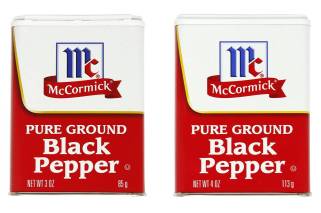Last Sunday, my Uncle Bill passed away. Uncle Bill was 88 years old, in failing health, and legally blind. He knew that it was his time and was in full acceptance of this final stage in the cycle of life. His last years were spent in Ohio under the watchful and caring eye of his beloved daughter, Kimberly. I wasn’t there when he passed, but I am sure that he was feisty till the end.
I suppose most everyone has or had an Uncle Bill in their life. You know, that special family member that was always a little eccentric, rough around the edges, but someone that you simply adored like no other. My first vivid memories of Uncle Bill were at the age of 4. I lived in a small town just outside of Los Angeles, called Artesia. Artesia in those days was a dairy farming community heavily populated with first and second generation Portuguese. I was the oldest of four kids, which included three younger sisters. Uncle Bill, who was my Mom’s younger brother lived somewhere in East Los Angeles. In those early memories of him, I can still hear his loud booming laugh as he lovingly slapped me around in order to “toughen” me up, as he said. I idolized him. He was my hero.
When Uncle Bill came to visit us in Artesia, it was the equivalent of a trip to Disneyland for me, even though there was no Disneyland in those days. As soon as he arrived, he and I would hop back in his 1946 Ford and head to the corner grocery store to buy an apple pie and ice cream. Let the party begin.
Somewhere between my ages of 5 to 6, Uncle Bill and Aunt Barbara moved to Artesia and bought a house right next door to ours. I’m not sure how long they were there because we moved away first, but it seemed like a long time to a 5 year old. As I recall, I would hang out with Aunt Barbara after school and wait for Uncle Bill to get home from work so that we could “rough-house”.
Uncle Bill was about 6 feet tall and skinny as a rail. I can still picture him as a young twenty something in dirty jeans and a t-shirt. He always had greasy hands from working on cars. In fact, in his spare bedroom in that Artesia house, I remember spare engine parts scattered all over the floor. I would sometimes play in that room and pretend to be working on those parts, just like my Uncle Bill. It was one of those episodes in that sacred room that got me in trouble one day.
It was a few days before Christmas and I was 5 years old. I was at my house and Uncle Bill came over and told me to “get my butt over to his place”. He proceeded to chew me out and demanded to know if I was in his “auto parts bedroom” that day. He told me that if I was, he would have to throw everything away in there and it would be all my fault. I had no idea why he was so upset nor why he would have to throw everything away. I was very confused and began crying and ran back to my house. Apparently, there was something in that room that I was not supposed to see.
As it turned out, the thing that I was not supposed to see was my first bicycle that my grandfather had bought me for Christmas. Uncle Bill was the designated assembler and it was his job to make sure it was a surprise. I don’t know how I missed the bike in the room, but seeing the bike under the Christmas tree was truly a surprise.
There were many isolated memories of those Artesia years with Uncle Bill living next door. I think I was about 7 years old when my Dad and Uncle Bill built a wooden patio cover attached to our house. When it was time to paint, I was recruited to help out. Uncle Bill didn’t paint as that was too slow for him, so that job was relegated to my Dad, Mom and me. I can remember being on the top rung of the ladder and leaning backwards to reach a remote area of the structure with my paint brush. My Mom yelled at me to be careful. My reply was “this is how Uncle Bill would do it”. I can still remember saying those words.
My parents, Uncle Bill and Aunt Barbara would have adult late night parties under that patio. Maybe it was just one or two but it seemed like more. I can remember getting up early on the morning while my parents were still asleep and sampling the left over Tom Collins cocktails scattered around the patio area. I recall hearing a story about Uncle Bill getting rowdy at one of those parties and that one time he drank champagne out of my Aunt Maxine’s shoe, much to the anger of her husband, Uncle Gene. Aunt Maxine, who is still alive and well, is my father’s sister.
Uncle Bill had lots of interests. You might say he was the ultimate jack of all trades. For example, there was the time that I went over to Uncle Bill’s house to discover a baby calf in the back porch area of his house. My job was to feed the calf milk from a bottle. I don’t know what the greater plan was for the calf or if we were going into the dairy business, but that phase passed quickly and no more calves showed up.
Fast forward three years to 1954. I was 8 years old and we moved away from Artesia and I had to leave my beloved Uncle Bill. The reasons for the move were not clear to me at the time, but as I would learn later, it was the prelude to the breakup of my parents. Shortly after arriving to our new home which was a second story apartment in Concord, California, we began to see less and less of my father. He spent most of his time with his new girlfriend that he eventually married. We had it pretty rough, moving around a lot during the first year, until we finally settled in a little town called Port Chicago. Port Chicago was a navy town located on the Suisun Bay about 30 miles from San Francisco. Our family now consisted of me, my 29 year old Mother, and three younger sisters. I was 9 years old and now the man of the family.
It was the summer of 1957 when my Uncle Bill and Aunt Barbara drove up and visited us in Port Chicago. He showed up at our place in a brand new red and white 1957 Corvette – a fitting arrival for this audacious, larger than life personality. After a couple of days, it was decided that I would go back with them and spend the summer back in Artesia. I was elated and little did I know; I would embark on the most hair raising exciting journey of my life.
The distance between Port Chicago and Artesia is about 450 miles. That was before the Interstate 5 days, so the only direct route was Highway 99. Riding with the top down, with me seated in the middle of the two-seater Corvette, we made the trip in 6 hours, which calculated to an average speed of 75 miles per hour – including stops for gas and lunch. There were stretches where we exceeded 100 mph. One can only imagine how thrilling that is to an 11 year old boy. More than once, we eluded the California Highway Patrol, by outrunning them and pulling off the main drag until it was safe to resume. Yes, that was Uncle Bill, and that is a true story.
Uncle Bill worked in construction. He could build or fix anything. That summer of 1957, at 11 years old, I went to work with him every day. We poured cement slabs, installed aluminum awnings and patio covers all over the L.A. area. By the second week he had me installing awnings on my own. “Figure it out kid”, he would say. If I screwed up, he would make me tear it down and start over. Business was good, and he took on a helper. The three of us would ride together in Uncle Bill’s pickup to the residential job sites and do our thing. We went through two or three helpers that summer. I had become pretty proficient at installing awnings it was my job to train the young adult helpers. They never lasted long as they just couldn’t keep up with Uncle Bill and his 11-year-old nephew.
I can’t remember if I ever got paid for this work, but it didn’t matter. Hanging out with Uncle Bill was an adventure and it was payment enough. Soon the summer was over, and I had to leave Artesia and return to Port Chicago. The train ride back was fun, but nothing like the ride of my life in that red and white ’57 Corvette.
Although we always stayed in touch, I didn’t see that much of Uncle Bill as I moved through my adolescence and high school years. My Mom had remarried and we eventually returned to Southern California, settling in Orange County. In 1965, just a year after graduating from high school, I enlisted in the army. After training, I was sent to Vietnam in 1966. After returning from Vietnam, the next Uncle Bill story begins.
Within days after returning home from Vietnam, I rekindled my love affair with Sandi, who is my wife of 48 years. The story of us getting back together is a long one, but the short version is that we eloped to Las Vegas in September of 1967, much to the dismay and objections of her parents. We were young and in love, but broke as hell and nowhere to live. Further, I still had two years remaining on my army hitch which would be a tour in Taiwan. Who did I turn to? Yes, it was Uncle Bill.
I would only be home for 30 days before I would have to ship out again. Uncle Bill and Aunt Barbara had long since left Artesia and were living in Norco. They happily put us up and I spent much of my remaining time working with Uncle Bill in his construction business. This time, I did get paid.
So at age 37, Uncle Bill must have mellowed with age from that brash young man that always seemed to throw caution at the wind and reveled in the challenge of outrunning the cops in his Corvette. Well, yes and no.
In the few weeks that we worked together, we had our share of adventures that are still indelibly etched in my mind. There was the time that we were working at a job in Hemet. Now that I was 21, I was legal to have a beer. We stopped at this roadside bar after work and walked in finding no one in the place. So rather than go somewhere else, Uncle Bill just went behind the bar and drew a pitcher of beer just as if he owned the joint. We drank beer and shot pool for an hour or so, until someone finally showed up. Uncle Bill laid a $10 bill on the bar for the beer we had helped ourselves to. The bar began to fill up, and before long we were best friends with everyone in the place, mostly red-neck types. We shot pool, made bets and generally raised hell. It wasn’t long before Uncle Bill got too frisky and challenged someone to a fight. The odds were definitely against us with the red-neck bar patrons easily outnumbering us at least 8 to 1. The wise thing to do was leave. We did so in haste with someone named Ernie and his buddies chasing us with pool cues. The reason I know his name was Ernie, is that Uncle Bill returned to this dive after I shipped out and became best buddies with this guy named Ernie. That was Uncle Bill.
After I finished my tour in the army, Sandi and I would see Uncle Bill and Aunt Barbara from time to time. They moved from Norco back to Orange County. Uncle Bill adored Sandi and the feeling became mutual. I can still hear his deep baritone voice repeatedly saying to Sandi – “You’re ‘somethin’ else!” Sometime in the mid 70’s, Uncle Bill and Aunt Barbara moved to Nevada. We sort of lost touch for a while as families often do.
I think it was the summer of 1983 when Sandi and I drove up to Topaz Nevada to visit Uncle Bill and Aunt Barbara. Our two sons, Mark and Jeff were 15 and 11. Mark had his learners permit and was bragging about how good a driver he was. In typical Uncle Bill fashion, he tossed the keys to his truck to Mark and told him to show us how good he was.
“By myself?” Mark asked.
“That’s right big shot. Show us what you got.”
We all got a good laugh at watching Mark try to drive the truck while repeatedly popping the clutch and stalling the engine. Not once did Uncle Bill come to his rescue, but Mark eventually figured it out. That is how Uncle Bill did things.
Jeff, at 11 years old was quite a clothes horse even back then. I remember Uncle Bill playing rough house with him and teasing him about his pink Izod golf shirt with the alligator logo.
In 1988, Kimberly threw a surprise 60th birthday party for her Dad, my Uncle Bill. I drove up to Topaz for this, but unfortunately Sandi could not go. His first words after seeing that I was there were “Where’s Sandi?”
So that was and is my Uncle Bill. He was unconventional, brash but had a heart of gold and was larger than life to me. He loved his two kids, Jimmy and Kimberly dearly. I know he loved me and I loved him very much as well. He was “somethin’ else!”
May he rest in peace.
 Recently, the Trump administration unveiled its self-imposed 100-day deadline broad tax cut plan. In doing so, Mr. Trump appeared to be thumbing his nose at the two states that overwhelmingly rejected him in the November election – California and New York. To wit, eliminating the federal deduction for state and local taxes, including property taxes. Because California and New York are among the highest tax states, the pain of this $100 Billion revenue grab will be disproportionally felt by New Yorkers and Californians relative to the rest of the nation. Meanwhile they propose retaining the mortgage interest deduction on mortgages up to $1 Million. Repealing this would most surely upset his political support base.
Recently, the Trump administration unveiled its self-imposed 100-day deadline broad tax cut plan. In doing so, Mr. Trump appeared to be thumbing his nose at the two states that overwhelmingly rejected him in the November election – California and New York. To wit, eliminating the federal deduction for state and local taxes, including property taxes. Because California and New York are among the highest tax states, the pain of this $100 Billion revenue grab will be disproportionally felt by New Yorkers and Californians relative to the rest of the nation. Meanwhile they propose retaining the mortgage interest deduction on mortgages up to $1 Million. Repealing this would most surely upset his political support base.




 e the fact that the amount of product inside is actually shrinking.
e the fact that the amount of product inside is actually shrinking. Well, it’s about time! Rand Paul, a Republican from Kentucky and a candidate for the Presidential nomination has introduced a fresh and sensible alternative to our convoluted tax code. By adopting a broad based 14.5% flat tax and abolishing the payroll tax, the 70,000 pages in the current IRS tax code could and should go the way of the recycler.
Well, it’s about time! Rand Paul, a Republican from Kentucky and a candidate for the Presidential nomination has introduced a fresh and sensible alternative to our convoluted tax code. By adopting a broad based 14.5% flat tax and abolishing the payroll tax, the 70,000 pages in the current IRS tax code could and should go the way of the recycler. I haven’t met you because you have not been born yet. But while I still have clarity of mind and the blessings of good health, I wanted to take this opportunity to reach out and apologize for the mess that my generation has left you with. I am writing this letter to you in the year of 2014, but I suspect it will be somewhere around 2030 before you are old enough to read and understand what I have to say here.
I haven’t met you because you have not been born yet. But while I still have clarity of mind and the blessings of good health, I wanted to take this opportunity to reach out and apologize for the mess that my generation has left you with. I am writing this letter to you in the year of 2014, but I suspect it will be somewhere around 2030 before you are old enough to read and understand what I have to say here. Del Monte vs. Del Monte: What makes fruit fresh?
Del Monte vs. Del Monte: What makes fruit fresh?